 W
WThe 3rd Cavalry Regiment, formerly 3rd Armored Cavalry Regiment is a regiment of the United States Army currently stationed at Fort Hood, Texas.
 W
WThe 4th Cavalry Regiment is a United States Army cavalry regiment, whose lineage is traced back to the mid-19th century. It was one of the most effective units of the Army against American Indians on the Texas frontier. Today, the regiment exists as separate squadrons within the U.S. Army. The 1st Squadron of the 4th Cavalry's official nickname is "Quarterhorse", which alludes to its 1/4 Cav designation. The 3rd Squadron of the 4th Cavalry's official nickname is "Raiders". Today, the "1st Squadron, 4th Cavalry", "2nd Squadron, 4th Cavalry", "4th Squadron, 4th Cavalry", and "6th Squadron, 4th Cavalry" are parts of the 1st Infantry Division, while the "3rd Squadron, 4th Cavalry" serves as part of the 25th Infantry Division. On 23 September 2009, the "4th Squadron, 4th Cavalry" officially stood up at Fort Riley, Kansas as part of the 1st "Devil" Brigade, 1st Infantry Division. On 28 March 2008, the "5th Squadron, 4th Cavalry" officially stood up at Fort Riley, Kansas as part of the 2nd "Dagger" Brigade, 1st Infantry Division. The 6th Squadron, 4th Cavalry served as part of the recently inactivated 1st Infantry Division, 3rd "Duke" Brigade, at Fort Knox, Kentucky. The 1st and 5th Squadrons are assigned to their respective Brigade Combat Teams in the 1st Infantry Division. The 4th Squadron was inactivated in October 2015. The 3rd Squadron is assigned to the 3rd Brigade Combat Team in the 25th Infantry Division.
 W
WThe 7th Cavalry Regiment is a United States Army cavalry regiment formed in 1866. Its official nickname is "Garryowen", after the Irish air "Garryowen" that was adopted as its march tune.
 W
WThe 9th Cavalry Regiment is a parent cavalry regiment of the United States Army.
 W
WThe 10th Cavalry Regiment is a unit of the United States Army. Formed as a segregated African-American unit, the 10th Cavalry was one of the original "Buffalo Soldier" regiments in the post–Civil War Regular Army. It served in combat during the Indian Wars in the western United States, the Spanish–American War in Cuba and in the Philippine–American War. The regiment was trained as a combat unit but later relegated to non-combat duty and served in that capacity in World War II until its deactivation in 1944.
 W
WThe Arapaho are a Native American people historically living on the plains of Colorado and Wyoming. They were close allies of the Cheyenne tribe and loosely aligned with the Lakota and Dakota.
 W
WThe Battle of the Saline River in August 1867 was one of the first recorded combats of the Buffalo Soldiers of the U.S. 10th Cavalry. This battle occurred 25 miles northwest of Fort Hays in Kansas near the end of August 1867.[see discussion]
 W
WThe Battle of Beecher Island, also known as the Battle of Arikaree Fork, was an armed conflict between elements of the United States Army and several of the Plains Native American tribes in September 1868. Beecher Island, on the Arikaree River, then known as part of the North Fork of the Republican River, near present-day Wray, Colorado, was named afterwards for Lieutenant Fredrick H. Beecher, an army officer killed during the battle.
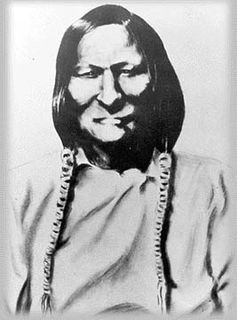 W
WBlack Kettle was a prominent leader of the Southern Cheyenne during the American Indian Wars. Born to the Northern Só'taeo'o / Só'taétaneo'o band of the Northern Cheyenne in the Black Hills of present-day South Dakota, he later married into the Wotápio / Wutapai band of the Southern Cheyenne.
 W
WThe Buffalo Hunters' War, or the Staked Plains War, occurred in 1877. Approximately 170 Comanche warriors and their families led by Quohadi chief Black Horse or Tu-ukumah left the Indian Territory in December, 1876, for the Llano Estacado of Texas. In February, 1877, they, and their Apache allies, began attacking buffalo hunters' camps in the Red River country of the Texas Panhandle, killing or wounding several. They also stole horses from the camp of Pat Garrett.
 W
WThe Buffalo Soldier Tragedy of 1877, also known as the Staked Plains Horror, occurred when a combined force of Buffalo Soldier troops of the 10th Cavalry and local buffalo hunters wandered for five days in the near waterless Llano Estacado region of northwest Texas and eastern New Mexico during July of a drought year, where four soldiers and one buffalo hunter died.
 W
WEugene Asa Carr was a soldier in the United States Army and a general in the Union Army during the American Civil War. He was awarded the Medal of Honor for his actions at the Battle of Pea Ridge.
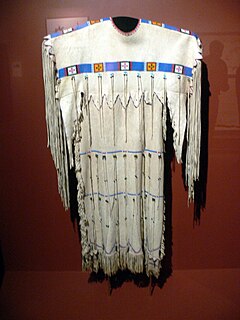 W
WThe Cheyenne are one of the indigenous people of the Great Plains whose language is of the Algonquian language family. The Cheyenne comprise two Native American tribes, the Só'taeo'o or Só'taétaneo'o and the Tsétsêhéstâhese. These tribes merged in the early 19th century. Today, the Cheyenne people are split into two federally recognized Nations: the Southern Cheyenne, who are enrolled in the Cheyenne and Arapaho Tribes in Oklahoma, and the Northern Cheyenne, who are enrolled in the Northern Cheyenne Tribe of the Northern Cheyenne Indian Reservation in Montana.
 W
WThe Cimarron Redoubt was an improvised U.S. Army fortification south of the city of Ashland in Clark County, Kansas, United States. Built in 1870 near a major trade route's crossing of the Cimarron River, it was later used for a variety of civilian purposes, including a post office. Today, it lies abandoned amid farm fields in southern Center Township.
 W
WGeorge Armstrong Custer was a United States Army officer and cavalry commander in the American Civil War and the American Indian Wars.
 W
WEdmund Gasseau Choteau Le Guerrier, of American and Cheyenne parentage, was a survivor of the Sand Creek massacre in 1864. He was an interpreter for the U.S. government during the Indian Wars between the Cheyenne and the United States, and later became a successful rancher.
 W
WRoman Nose, also known as Hook Nose, was a Native American of the Northern Cheyenne. He is considered to be one of, if not the greatest and most influential warriors during the Plains Indian War of the 1860s. Born during the prosperous days of the fur trade in the 1820s, he was called Môséškanetsénoonáhe ("Bat") as a youth. He later took the warrior name Wokini, which the whites rendered as Roman Nose. Considered invincible in combat, this fierce warrior distinguished himself in battle to such a degree that the U.S. military mistook him for the Chief of the entire Cheyenne nation.
 W
WIsatai'i, Isatai, or Eschiti was a Comanche warrior and medicine man of the Kwaharʉ band. Originally named Kwihnai Tosabitʉ, after the debacle at Adobe Walls on June 27, 1874, for which he was blamed, he was known as Isatai'i. Isatai'i gained enormous prominence for a brief period in 1873-74 as a prophet and "messiah" of Native Americans. He succeeded, albeit temporarily, in uniting the autonomous Comanche bands as no previous Chief or leader had ever done. Indeed, his prestige was such that he was able to organize what was said to be the first Comanche sun dance, a ritual that his tribe had not previously adopted.
 W
WKiowa people are a Native American tribe and an indigenous people of the Great Plains of the United States. They migrated southward from western Montana into the Rocky Mountains in Colorado in the 17th and 18th centuries, and finally into the Southern Plains by the early 19th century. In 1867, the Kiowa were moved to a reservation in southwestern Oklahoma.
 W
WRanald Slidell Mackenzie, also called Bad Hand, was a career United States Army officer and general in the Union Army during the American Civil War. He was described by General Ulysses S. Grant as its most promising young officer. He also served with great distinction in the following Indian Wars.
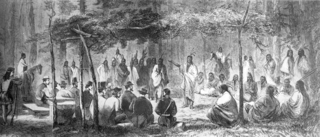 W
WThe Medicine Lodge Treaty is the overall name for three treaties signed near Medicine Lodge, Kansas, between the Federal government of the United States and southern Plains Indian tribes in October 1867, intended to bring peace to the area by relocating the Native Americans to reservations in Native American Territory and away from European-American settlement. The treaty was negotiated after investigation by the Indian Peace Commission, which in its final report in 1868 concluded that the wars had been preventable. They determined that the United States government and its representatives, including the United States Congress, had contributed to the warfare on the Great Plains by failing to fulfill their legal obligations and to treat the Native Americans with honesty.
 W
WNelson Appleton Miles was an American military general who served in the American Civil War, the American Indian Wars, and the Spanish–American War. From 1895 to 1903, he served as the last Commanding General of the United States Army before the office was abolished.
 W
WNicholas Merritt Nolan was a United States Army major. An Irish immigrant, he began his military career in New York on December 9, 1852 with the 4th Artillery, and subsequently served in New York's 2nd Dragoons. He enlisted as a private and rose through the ranks becoming a first sergeant. He was commissioned an officer in late 1862 in the Regular Army, while serving with the 6th U.S. Cavalry Regiment during the American Civil War. He participated in 16 campaigns with the 6th and most of its battles. He was slightly wounded at the Battle of Fairfield and seriously wounded at the Battle of Dinwiddie Court House. He was brevetted twice and noted at least twice for gallantry during combat. He was slightly wounded when captured at the end of March 1865, and was later paroled. After the Civil War, he served with the 10th U.S. Cavalry, known as the Buffalo Soldiers, for 14 years. Nolan is also noted for his pluses and minuses during the Buffalo Soldier tragedy of 1877 that made headlines in the Eastern United States. He was the commanding officer of Henry O. Flipper in 1878, the first African American to graduate from the United States Military Academy at West Point. He commanded several frontier forts before his untimely death in 1883.
 W
WThe Battle of Palo Duro Canyon was a military confrontation and a significant United States victory during the Red River War. The battle occurred on September 28, 1874 when several U.S. Army regiments under Ranald S. Mackenzie attacked a large encampment of Plains Indians in Palo Duro Canyon in the Texas Panhandle.
 W
WQuanah Parker was a war leader of the Kwahadi ("Antelope") band of the Comanche Nation. He was likely born into the Nokoni ("Wanderers") band of Tabby-nocca and grown up among the Kwahadis, the son of Kwahadi Comanche chief Peta Nocona and Cynthia Ann Parker, an Anglo-American who had been kidnapped as a child and assimilated into the Nokoni tribe. Following the apprehension of several Kiowa chiefs in 1871, Quanah Parker emerged as a dominant figure in the Red River War, clashing repeatedly with Colonel Ranald S. Mackenzie. With European-Americans hunting American bison, the Comanches' primary sustenance, into near extinction, Quanah Parker eventually surrendered and peaceably led the Kwahadi to the reservation at Fort Sill, Oklahoma.
 W
WThe Red River War was a military campaign launched by the United States Army in 1874 to displace the Comanche, Kiowa, Southern Cheyenne, and Arapaho Native American tribes from the Southern Plains, and forcibly relocate the tribes to reservations in Indian Territory. Lasting only a few months, the war had several army columns crisscross the Texas Panhandle in an effort to locate, harass, and capture highly mobile Native American bands. Most of the engagements were small skirmishes in which neither side suffered many casualties. The war wound down over the last few months of 1874, as fewer and fewer Indian bands had the strength and supplies to remain in the field. Though the last significantly sized group did not surrender until mid-1875, the war marked the end of free-roaming Indian populations on the southern Great Plains.
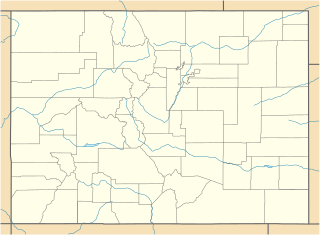 W
WThe Battle of Summit Springs, on July 11, 1869, was an armed conflict between elements of the United States Army under the command of Colonel Eugene A. Carr and a group of Cheyenne Dog Soldiers led by Tall Bull, who was killed during the engagement. The US forces were assigned to retaliate for a series of raids in north-central Kansas by Chief Tall Bull's Dog Soldiers band of the Cheyenne. The battle happened south of Sterling, Colorado in Washington County near the Logan/Washington county line.
 W
WThe Battle of Washita River occurred on November 27, 1868, when Lt. Col. George Armstrong Custer's 7th U.S. Cavalry attacked Black Kettle's Southern Cheyenne camp on the Washita River.
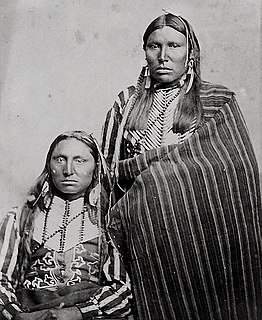 W
WThe Battle of Yellow House Canyon was a battle between a force of Comanches and Apaches against a group of American bison hunters that occurred on March 18, 1877, near the site of the present-day city of Lubbock, Texas. It was the final battle of the Buffalo Hunters' War, and was the last major fight involving the United States and Native Americans on the High Plains of Texas.